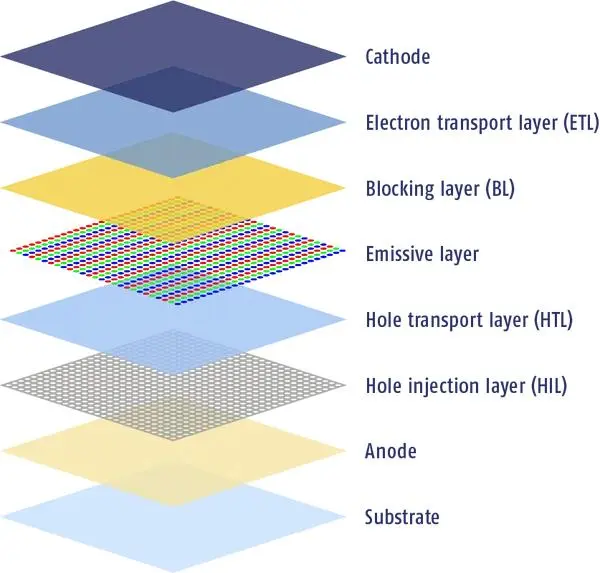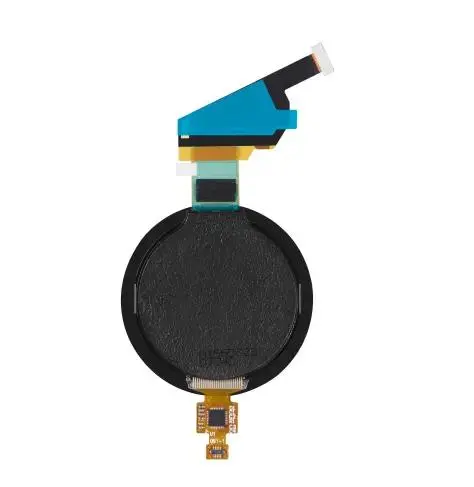目录
ToggleThe basic structure of an OLED display module
OLED display module are usually made of a coating of organic materials and a glass substrate that lights up when an electric current is passed through, revealing the corresponding picture.OLED display modules have a larger viewing Angle and are more energy-efficient than LCD screens.

What’s the difference between an OLED display module?
About the display effect, LCD module because the liquid crystal layer can not be completely closed, even in a display of black, there will still be part of the backlight through the color layer. Which will cause the LCD black is not pure enough not black enough. OLED display module, on the other hand. Can directly turn off pixels in the black area to achieve a pure black effect. The dark mode on many current phones takes advantage of this feature to save power.
Because of this, OLED display modules can achieve higher contrast, which visually makes colors look more comfortable. Regarding display structure. OLED display modules are much simpler than LCDs, so OLED display modules can be made thinner. And with the right substrate, the OLED display module can also bend a lot, creating flexible screens that are impossible for LCDs. This also opens up more applications for OLED display modules.
The advantages of OLED display module
- The solid mechanism has no liquid material, so the seismic performance is better, not afraid of falling.
- There is almost no problem with visual Angle, even in a large Angle of view, the picture is still not distorted.
- The response time is one-thousandth of the LCD, the display motion picture absolutely will not have the phenomenon of dragging.
- Low-temperature characteristics are good, at -40 degrees can still be a normal display, and LCD can not do so.
- The manufacturing process is simple, lower cos.
- Can be made on different materials of the substrate, and can be made into a flexible display.
The disadvantages of OLED display module
- The life is usually only 5000 hours, less than the LCD life of at least 10,000 hours.
- It cannot achieve mass production of large-size screens, so it is only suitable for portable digital products at present.
- There is the problem of color purity is not enough, it is not easy to show bright, rich colors.

Application of Transparent OLED display module
The transparent is widely used in digital signage displays, traffic, construction, homes, and other scenes.
Transparent OLED products suitable for office scenes can be equipped with transparent OLED screens on external Windows to display wide panoramic views and save space occupied by TVS and monitors.
Moreover, the products can be used for video conferencing, display, entertainment, and other purposes. A transparent is applied to the home screen of interior decoration, which can enhance the sense of spatial integration and improve the sense of high-end decoration. When applied to high-end brand stores, customers can see the displayed goods and image information to highlight the high-end image and achieve better advertising effects.
0